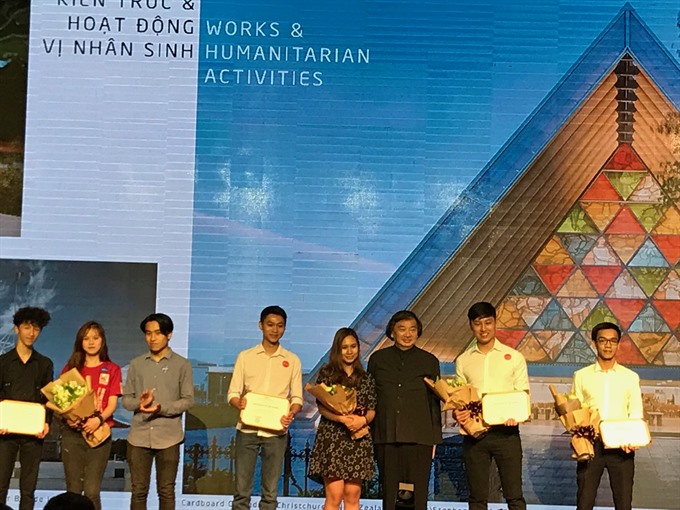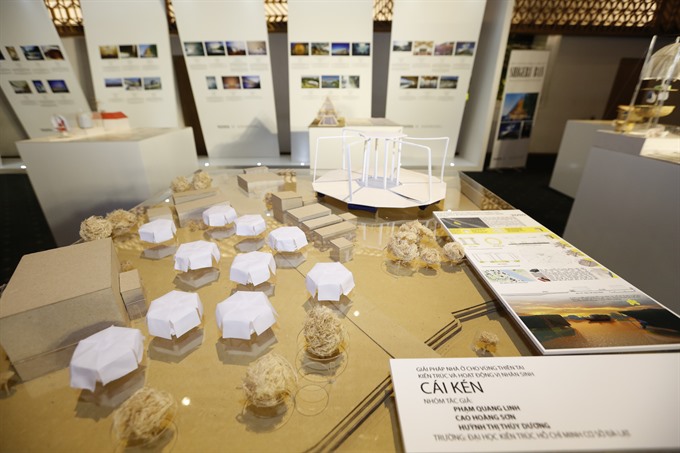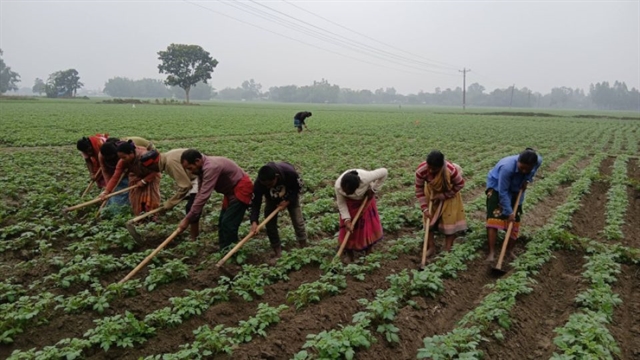 Society
Society

Despite recent devastating floods, the number of flood-resistant houses designed and built for families in the central and Mekong Delta provinces remains modest, according to Nguyễn Thu Phong, chairman of the Việt Nam Young Architects Club.
 |
| The winners in the Housing Solution for Disaster Areas competition pose with Shigeru Ban (third, right) at the Work & Humanitarian Activities event held on Saturday in HCM City. — VNS Photo Gia Lộc |
HCM CITY — Despite recent devastating floods, the number of flood-resistant houses designed and built for families in the central and Mekong Delta provinces remains modest, according to Nguyễn Thu Phong, chairman of the Việt Nam Young Architects Club.
Therefore, both young and veteran architects should be encouraged to do research on temporary accommodations for people in these areas, he said, adding that such accommodations are increasingly needed after periods of flooding.
Phong spoke at a Work and Humanitarian Activities event on Saturday in HCM City held by TOTO Vietnam and TOTO Gallery MA to inspire young architects to build temporary housing in flood-prone areas.
Some housing models that have been built have been successful. Residents in new two-storey concrete housing in Hà Tĩnh Province, for example, are able to move to the second floor when flooding occurs, according to Phong.
In addition, floating houses built in Quảng Bình Province have been useful in times of flooding.
Students at architecture schools are designing models for such areas, and their ideas should be developed into real projects, Phong said.
Three students at the HCM City University of Architecture in Lâm Đồng Province’s Đà Lạt, for instance, designed a cocoon-like house for people in flooded areas.
Their design won first prize in the “Housing Solution for Disaster Areas” contest for university students throughout the country, inspired by renowned Japanese architect Shigeru Ban’s humanitarian architectural works.
Nguyễn Tấn Vạn, chairman of the Việt Nam Association of Architects, said that Vietnamese students were inspired by Ban’s talent, creativity and accomplishments.
Ban won the 2014 Pritzker Prize, considered the Nobel Prize of Architecture, for his humanitarian works.
Speaking at the event on Saturday, he said that temporary accommodations using locally available materials were the best option for people who have lost their homes due to natural disasters.
Low-cost and eco-friendly materials should be used to quickly build temporary accommodations for victims, and architects should visit affected areas to discover demand and work to build accommodations, he said.
For the last two decades, Ban has used cardboard, paper tubes, bamboo and shipping containers to build temporary accommodations to help the homeless and those who have lost their homes due to natural disasters.
Paper log houses, for instance, were built with sandbag-loaded beer crates used as the foundation of the house, and 106-mm diametre and 4mm-thick paper tubes were used for the walls of housing built for Vietnamese residents living in Kobe, Japan after the earthquake in 1995.
Ban has visited other areas affected by natural disasters, including Turkey and India, to build temporary accommodations.
“If I have another chance to return to Việt Nam and work with Vietnamese students and architects to visit these affected areas, I will help them with the best solutions,” he added. — VNS
 |
| A model of cocoon-like houses designed by students of HCM City University of Architecture in the Đà Lạt City for victims of flooding. — VNS Photo |




